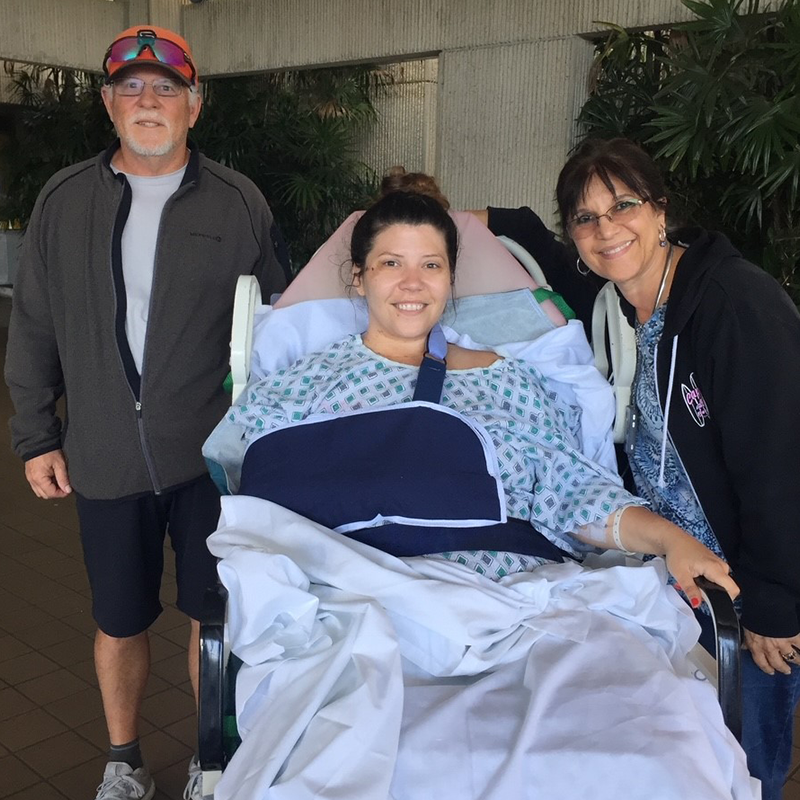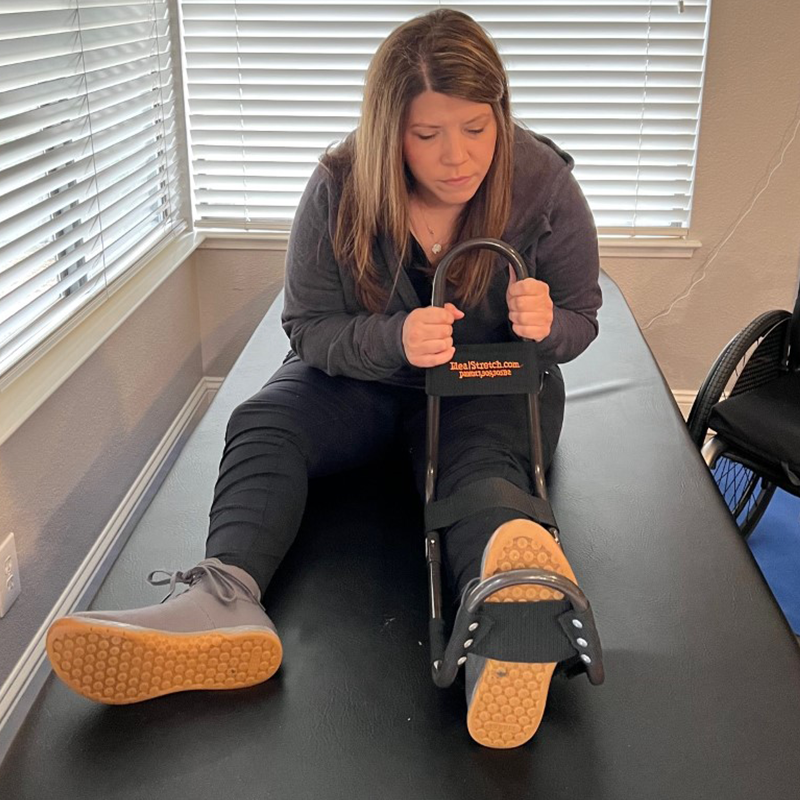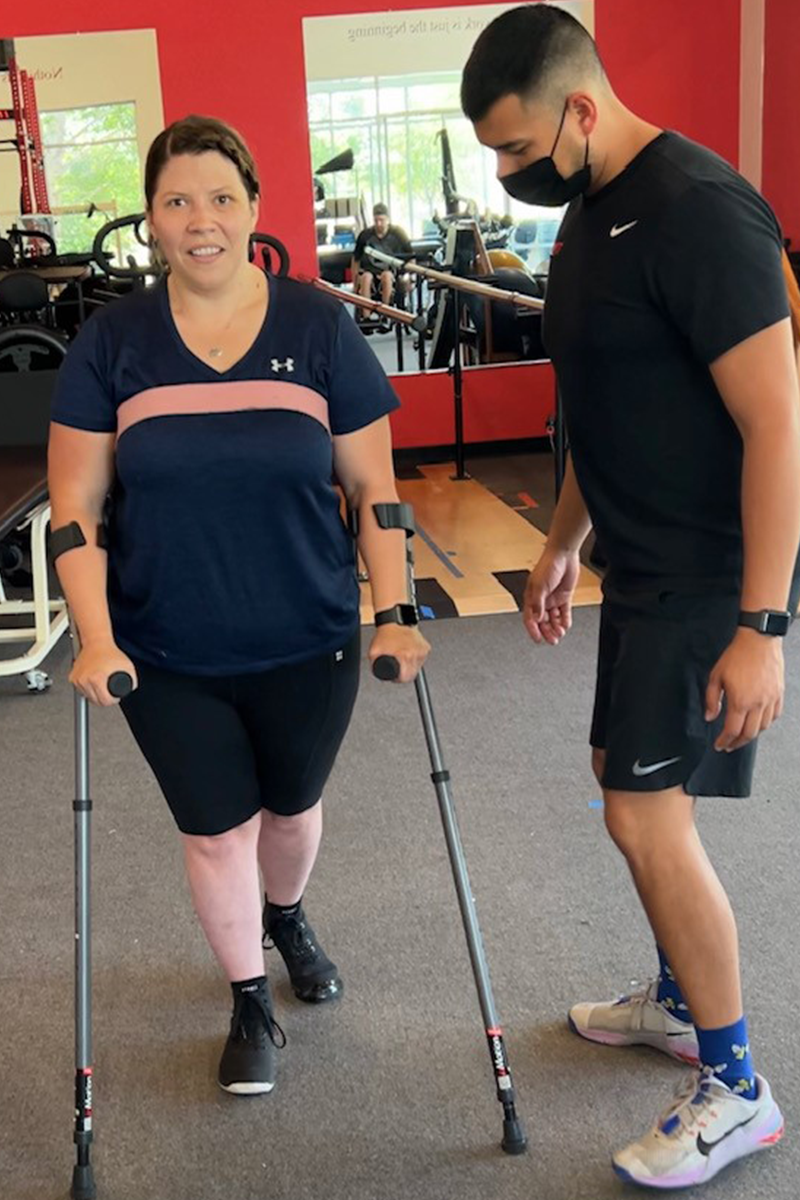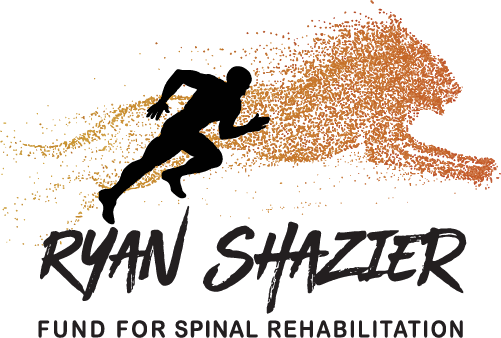Five years after a life-changing bicycle accident, an SCI warrior gains the ultimate independence.
Jessica Harris needed to get out of the house. And she did–five years after a freak bicycle accident while on vacation stole her ability to walk. Harris, through her own hard work and the tireless care and assistance of her parents, moved out of their house to her own home–12 doors down the street. What makes this remarkable is that when Harris broke her back at the T6 vertebrae, (right below the breastbone) it “pinched my spinal cord and paralyzed me immediately,” she recounts.
A Vacation Spill
“It was May 3rd, 2017, and I was the front office manager for a boutique hotel in Sausalito, California,” Harris says as she recounts the specifics of her accident. She had been working in the hotel industry as a front office manager since graduating from college 10 years prior. “I loved my job, and I was good at it,” Harris laughs. Her naturally effervescent personality, combined with her positive, solutions-oriented attitude, made her a perfect fit for the rigors of hotel management. Harris and some work friends were taking time from those hotel rigors in Hawaii when her accident happened. “I was downhill biking, so I’m not too sure what occurred,” Harris begins. “No one actually saw me fall, but what we assume is that I flipped over the handlebars.” She was wearing a helmet, and her friends found fragments it on the guardrail. Harris was unconscious but did not get a concussion or a brain injury. But she did break her spine at the T6 vertebrae, which crushed her spinal cord. She also suffered a broken clavicle and some broken ribs.
Long Journey Home
Harris was rushed to a Maui emergency room and, from there, airlifted to a trauma center in Honolulu, where she had a plate installed from T2-T8 to stabilize her spine. “I was there for 20 days and then airlifted to the Kaiser Foundation Rehabilitation Center In Vallejo, CA,” explains Harris. “I was there for 18 days. That’s it.” According to Harris, she was classified as an ASIA A, where there is no motor or sensory function below the level of injury. “At the hospital, they told me I had less than a 3% chance of ever moving a muscle below my injury,” quipped Harris. “To paraphrase, it was, ’You’re paralyzed; this is what you get.’”
Movement of Hope
But while in rehab, she started getting involuntary muscle spasms, which could indicate Harris might make progress. “And then they said, ‘You might not be complete (an ASIA A), but you’re still never going to walk again.” So, after a whopping 18 days in inpatient physical therapy and with a scant glimmer of hope appearing in the form of spasms, Harris was sent home. “They gave me a home therapist once a week, and they didn’t know anything about spinal cord injuries,” Harris explains. Harris’ home therapy lasted six weeks.
A Family Affair
The Harris Family mobilized. Her parents, Roxann and Terry, brought their free-spirited, independent daughter back home. The family home was “rearranged,” and equipment for Jessica Harris’s recovery became part of the family décor. “My parents are amazing.,” says Harris, who notes that her two older brothers and their young families are always pitching in, too. “Luckily for me, they were retired when I got hurt, so they jumped in full force.” Harris’s mom Roxann helped with all her medical care, and her father, Terry, joked that he became a “physical therapist” in retirement.
Minimal Movement
About five months after her injury, Harris hit the SCI trifecta: she developed spasms, clonus and nerve pain. The doctors attributed these developments to a UTI. “And then I started to voluntarily move my right leg,” Harris says. “It wasn’t very strong, but I knew it wasn’t tone taking over!” “I was pretty emotional, and everyone was thinking I was going to walk again,” says Harris. “No,” Harris cautioned her family. “You don’t know this injury. You don’t know how it affects your body, and you don’t know how much freakin’ hard work this is!”
A Perfect (SCI) FIT
Three months after coming home, Harris was approved for outpatient therapy. She chose SCI-FIT (Spinal Cord Injury Functional Integrated Therapy), an activity-based therapy gym specifically for spinal cord-injured clients. The program is self-pay. and Harris’s yearly out-of-pocket costs are up to $15,000 a year. “They’re fantastic,” Harris relates. “It’s $100/hour, but it’s life-changing, and I go twice a week.” She funds this endeavor through “lots of grants and donations and my Social Security disability.” Harris says. And, in a fortuitous stroke of luck, she had purchased a supplemental long-term disability insurance policy through work, which covers her until she is 65.
Tell Her She Can’t…
Harris was working on gaining the ability to perform a standing transfer. She was still receiving traditional therapy through her insurance. She was told by that physical therapist it was unrealistic for her try this skill. “She said I should move on with my life because I was paying too much attention to these kinds of therapies.” Harris pauses and then adds, “I looked her in the eye and said, ‘I think I’m doing a pretty good job of moving on with my life with what I was given.’”
The next day Harris had an SCI-FIT training session, and she relayed the exchange between her and the other physical therapist. The trainers at SCI-FIT scoffed and told Harris she was going to do the standing transfer right then and now. “I told them I was scared,” Harris admits, but she said the SCI-FIT therapists wouldn’t let her wriggle out of the task. “I was so beaten down in my brain,” says Harris, opining that the passive, negative messages signaled by the “traditional” physical therapists had seeped into her psyche. They got to work. “And (when) I stood up, and my legs locked, I cried,” says Harris. “I cried when I sat back down, and it was an ugly cry. Because I did it!”
Show It All
That was in April 2020. Harris posted her accomplishment on Instagram.Harris thinks it’s essential to show the good, bad, the ugly, and what’s possible by seeking therapies that are right for the individual. “If other people were in my position and were told you’re never going to walk again, I’m here to show them anything is possible.” Follow along, and look back on Harris’s journey on Instagram
Stand UP!
Harris’s personal fitness and recovery journey started with her audacious standing transfer. At that time, her leg movements were governed by spasms, “so nothing voluntary,” explains Harris. She also read somewhere that “If you exercise six days a week, five hours a day, you could make meaningful gains,” she says. “I said to my dad, ‘We’re not going anywhere. Let’s figure out what we can do every day.’ He was all in!”
She started with crawling, then added a host of other activity-based therapies. Both her parents were active participants, blocking her legs, guiding her torso, and catching her when she fell, both physically and emotionally. “When I tried something, and it didn’t work, I waited and tried it again later.” Harris and her parents never gave up.
Constantly Consistent
“So, it took three years of every single day for my body–my left leg– to get on board,” she says. “For three years, every single day, I stood in my standing frame for an hour. Every day we went to SCI-FIT. I did water therapy. I stretched. I crawled.” Harris says some thought she was crazy. But as the workouts became her life routine, they also became a big part of her pain management. She was able to wean herself off all prescription medications.
Home Sweet Home
And the Harris’s family dedication to their daughter and sister, and the process of recovery, enabled Jessica Harris to buy her own house nine doors down from her parents. “I wanted my own place again–I am 35! But I wanted my parents to enjoy their retirement,” she says. Harris is quick to point out that she still sees her mom almost every day. “But now it’s not so she can help me with my bowel program,” she laughs,” but it’s like ‘Hey mom, wanna watch a movie?’” “You’ve gotta learn to live and love this life!” Advice we all can use.
Shalieve
Wisdom
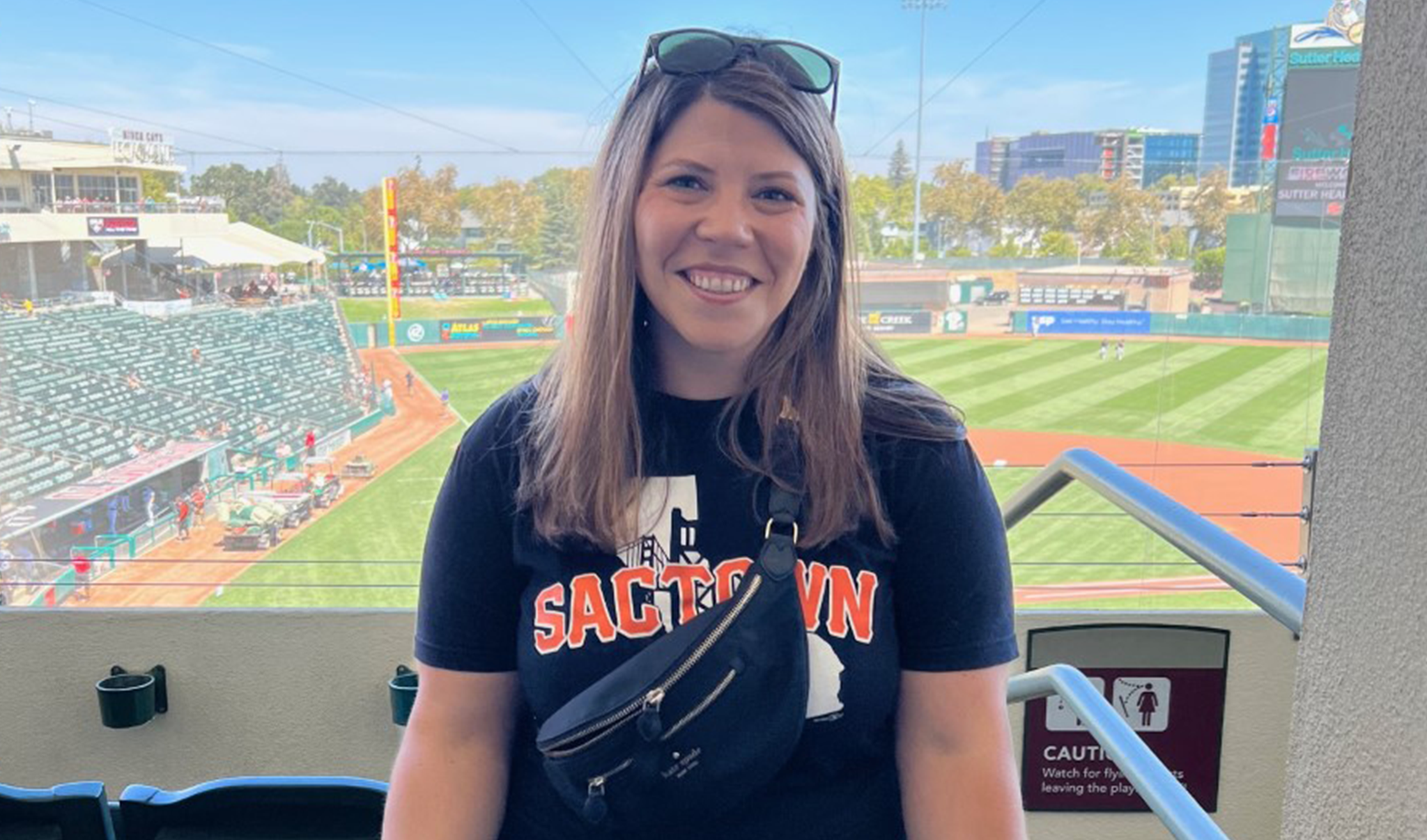
Don't listen to what doctors say. If I had taken their advice and guidance, which was ‘You’re never going move a muscle below your belly button,’ I wouldn’t be here now!
Find your support system. I’ve made all this progress because I have a fantastic support system. My parents, my amazing friends, my brothers, their kids, and their wives, all stepped up to help me. I get that everyone doesn’t have this kind of support. I also joined SCI-only groups, because sometimes I just need to talk to like-minded people that understand our injury. You don’t feel so alone.
Eat Healthily! I can’t stress this enough. I put on 40 pounds–I don’t mind people knowing because I am a curvy girl–because I wasn’t watching my diet. When I don't have a controlled diet, my bowel program is chaos. My bladder is also weird. I eat the same breakfast every morning. I eat at least 100 grams of protein every day, though I should get more. And I have lost what I gained, but I have to be diligent with my food intake.


